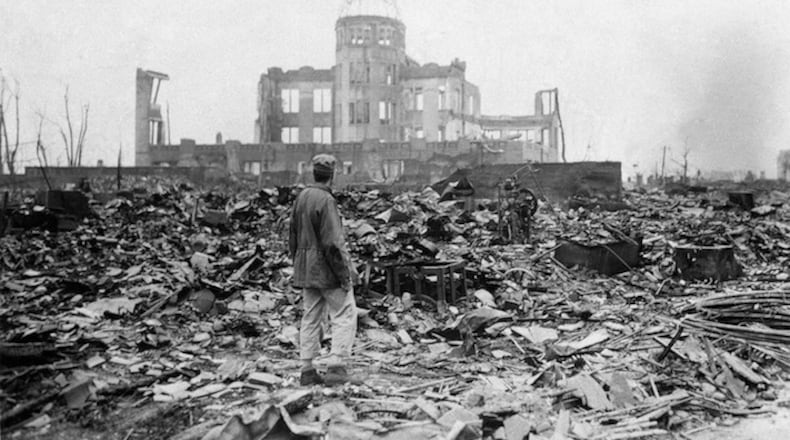As Hiroshima marks the 75th anniversary of the 1945 U.S. atomic attack, a Japanese court has ruled for the first time that people who were exposed to radioactive “black rain” that fell after the attack are recognized as atomic bomb survivors.
The court also is ordering the city and the prefecture to provide the same government medical benefits as given to other survivors.
The Hiroshima District Court said all 84 plaintiffs who were outside of a zone previously set by the government as where radioactive rain fell also developed radiation-induced illnesses and should be certified as atomic bomb victims. All of the plaintiffs are older than their late 70s, with some in their 90s.
The U.S. dropped the world’s first atomic bomb on Hiroshima on Aug. 6, 1945, killing 140,000 people and almost destroying the entire city. The plaintiffs were in areas northwest of the ground zero where radioactive black rain fell hours after the bomb was dropped.
The plaintiffs have developed illnesses such as cancer and cataracts linked to radiation after they were exposed to black rain, not only that which fell but also by taking water and food in the area contaminated with radiation. They filed the lawsuit after Hiroshima city and prefectural officials rejected their request to expand the zone to cover their areas where black rain also fell.
In the ruling, the court said the plaintiffs’ argument about their black rain exposure was reasonable and that their medical records showed they have health problems linked to radiation exposure.
Dozens of plaintiffs walked into the Hiroshima court in the rain, showing a banner saying “Certificates to all ‘black rain’ victims.” As soon as the ruling was issued, lawyers for the plaintiffs ran out of the court, showing a banner saying “Full victory,” and their supporters applauded and cheered.
The average age of Hiroshima’s survivors is more than 83, and many suffer from the long-lasting effects of radiation. According to a recent Asahi newspaper survey of 768 survivors, nearly two-thirds said their wish for a nuclear-free world is not widely shared by the rest of humanity, and more than 70% called on a reluctant Japanese government to ratify a nuclear weapons ban treaty.
Credit: Stanley Troutman
Credit: Stanley Troutman
A second atomic attack on Nagasaki on Aug. 9, 1945, killed another 70,000. Japan surrendered on Aug. 15, bringing an end to a conflict that began with its attack on Pearl Harbor in December 1941 during its attempt to conquer Asia.
Some 20,000 ethnic Korean residents of Hiroshima are believed to have died in the nuclear attack. The city, a wartime military hub, had a large number of Korean workers, including those forced to work without pay at mines and factories under Japan’s colonization of the Korean Peninsula from 1910 to 1945.
Credit: U.S. ARMY / AP
Credit: U.S. ARMY / AP
Japanese bomb survivors had no government support until 1957, when their years-long efforts won official medical support. But a strict screening system has left out many who are still seeking compensation. Assistance for survivors outside Japan was delayed until the 1980s.
The atomic bombings set off a nuclear arms race in the Cold War. The United States justified the bombings as a way to save untold lives by preventing a bloody invasion of mainland Japan to end the war.
The Associated Press contributed to this report.
About the Author
The Latest
Featured





